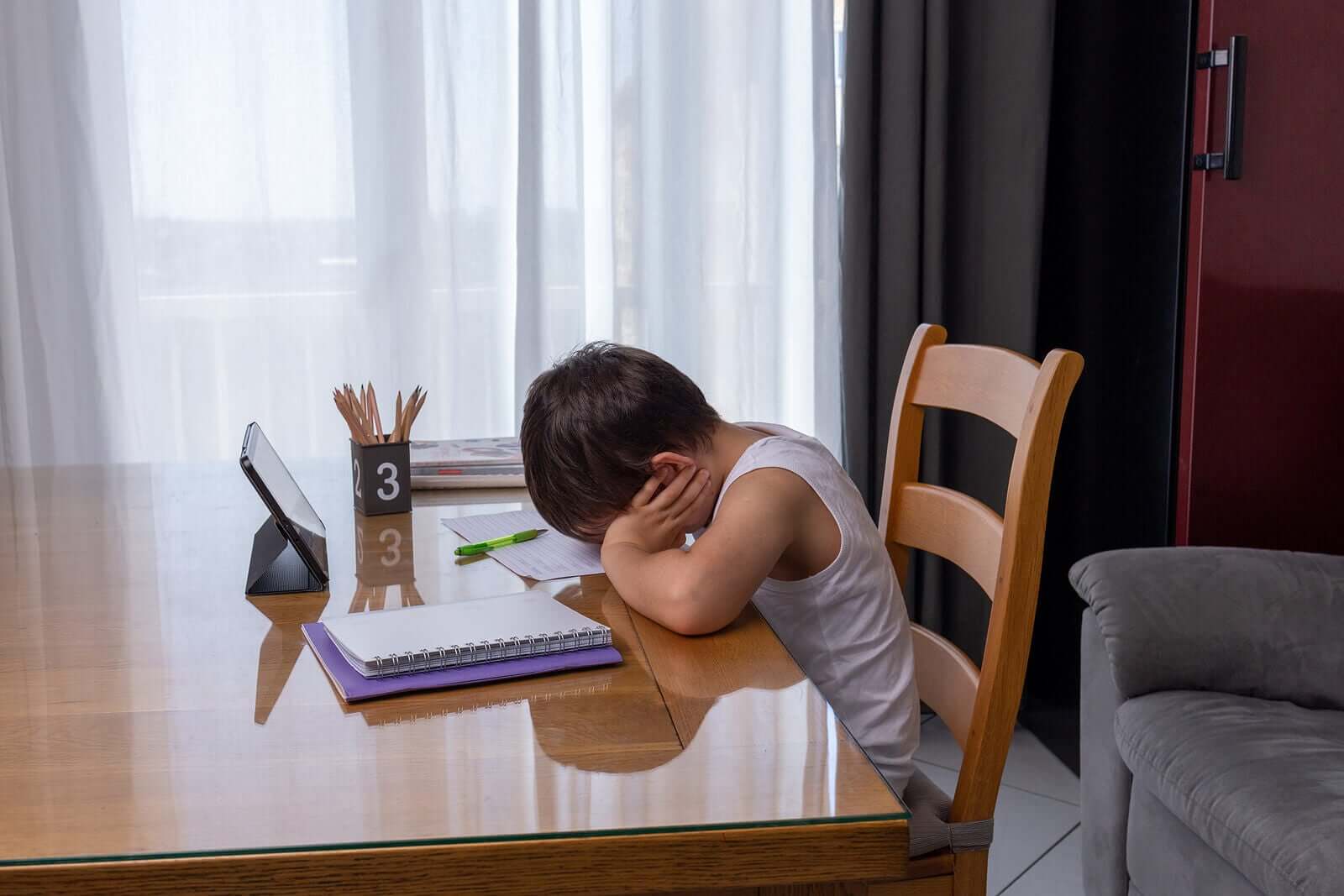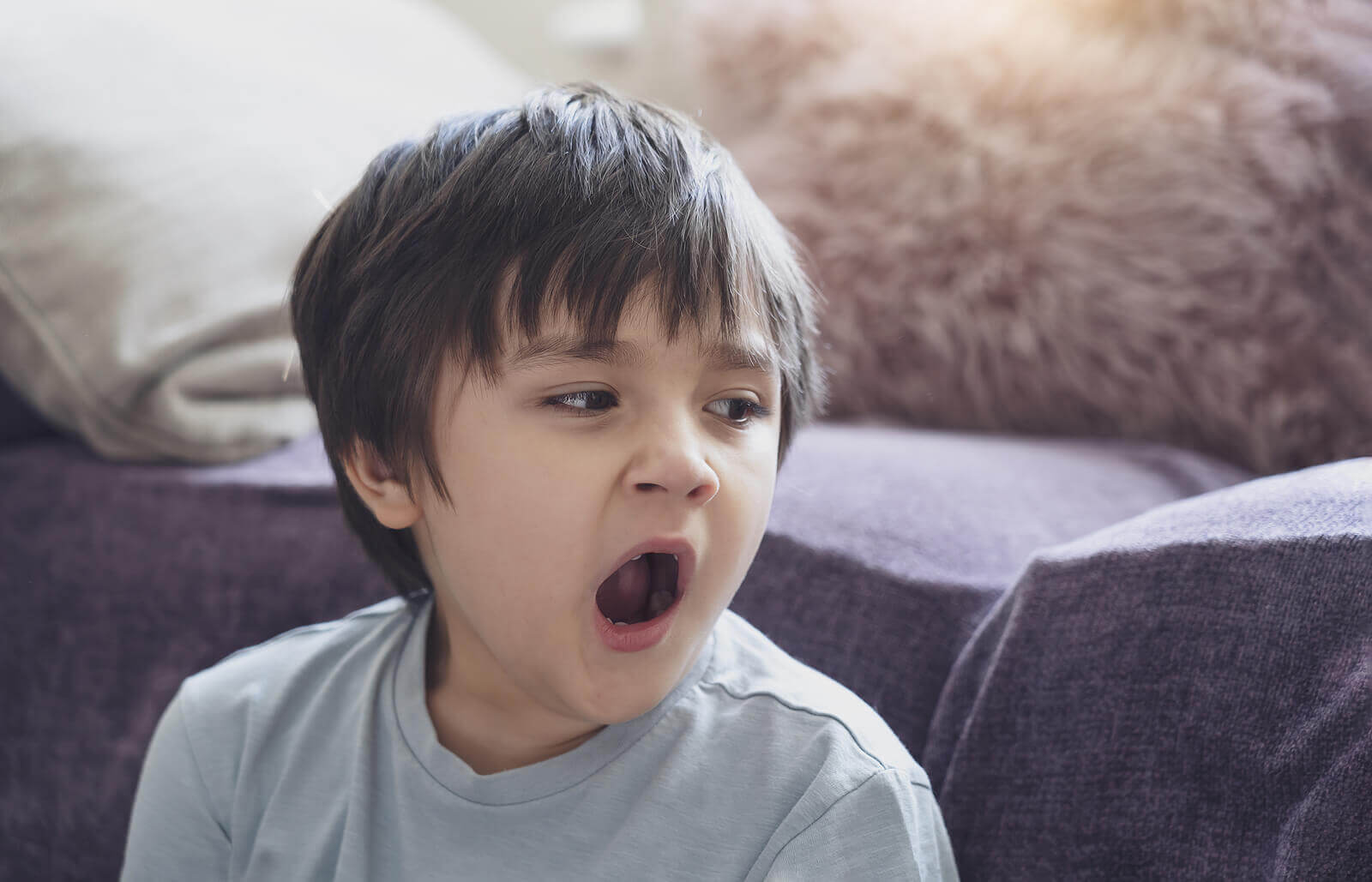Children Also Need Mental Breaks

We, as adults, are aware that when we’ve been focused on a task for a long time, we need to rest our minds. That’s why we often take time out for a drink or a chat with a colleague in the office. Well, even though children seem full of energy, and although the time they manage to stay focused is much shorter, they also need these mental breaks.
If they don’t get them, then consequences will soon follow. From irritability and frustration, to lack of concentration, the depletion of their cognitive and emotional abilities will manifest itself in a variety of ways.
We often assume that these symptoms are a reflection of a child’s bad attitude, when, in reality, they’re a call for help. Therefore, to avoid their discomfort and prevent conflicts at home, let’s try to understand why mental breaks are so important.

What are mental breaks?
Mental breaks are short breaks that children should take after spending some time concentrating on a task. They simply consist of shifting the focus of attention to a different activity that doesn’t require cognitive effort on their part. However, the duration of these breaks and their content must be adapted to each case.
Frequency and duration of mental breaks
First of all, the child’s age is a determining factor when scheduling these breaks. Younger children will need to take breaks much more frequently than adolescents. The former will need to rest after approximately 15 minutes of concentration on a task, while the latter will be able to continue working for about 45 minutes.
Similarly, the duration of these breaks won’t always be the same. For primary school children, 5 or 6 minutes may be enough to recharge their energy. However, a teenager in the middle of studying will probably require at least 20 minutes to get back on task.
How can children rest their minds?
In addition to this, the way each child needs to rest his or her mind may be different. Some children are more introverted and regain their mental strength by doing quiet, solitary activities. Other children are more dynamic and active and need more intense stimulation, preferably in the company of others.
So, before choosing the way to carry out mental breaks, analyze what best suits your child’s personality. Some possible alternatives are as follows:
- Taking deep breaths or following a short guided meditation.
- Coloring an illustration or doing a drawing.
- Practicing stretching or carrying out some children’s yoga postures.
- Playing music, singing and dancing to a couple of songs. Breaks that include physical exercise have also been shown to improve not only academic performance, but also children’s fitness and habits.
- Talking about something unrelated to the activity, drinking water, or eating a snack are simple actions that provide the mental space a child needs.
When do children need mental breaks?
Mental breaks are essential when children are doing school or learning tasks. You’ll find that, by implementing them, you’ll avoid many arguments and family conflicts which often occur when a child is doing their homework.
But this isn’t the only time when breaks are beneficial. They’re necessary in any activity that requires the child’s mental energy for a prolonged period of time. Whether reading, playing or watching TV, it’s important to switch tasks from time to time.

Likewise, if the child has been subjected to a period of particular stress, it’ll be a very positive step to plan a family outing that will help him or her to disconnect, and have fun. For example, an outing to the countryside after the exam period will be very useful for the child to recover emotionally.
Resting the mind brings great benefits
These short breaks shouldn’t be seen as unproductive, nor should they be seen as a waste of time. Quite the contrary: they’re the best allies to ensure that the child returns to their tasks with renewed energy and in a peak mental state.
Among the benefits of taking short breaks are improved concentration, attention and the ability to retain information. It avoids fatigue and frustration and helps to improve the child’s attitude and mood. It is, in short, a simple habit that can contribute to great positive changes.
We, as adults, are aware that when we’ve been focused on a task for a long time, we need to rest our minds. That’s why we often take time out for a drink or a chat with a colleague in the office. Well, even though children seem full of energy, and although the time they manage to stay focused is much shorter, they also need these mental breaks.
If they don’t get them, then consequences will soon follow. From irritability and frustration, to lack of concentration, the depletion of their cognitive and emotional abilities will manifest itself in a variety of ways.
We often assume that these symptoms are a reflection of a child’s bad attitude, when, in reality, they’re a call for help. Therefore, to avoid their discomfort and prevent conflicts at home, let’s try to understand why mental breaks are so important.

What are mental breaks?
Mental breaks are short breaks that children should take after spending some time concentrating on a task. They simply consist of shifting the focus of attention to a different activity that doesn’t require cognitive effort on their part. However, the duration of these breaks and their content must be adapted to each case.
Frequency and duration of mental breaks
First of all, the child’s age is a determining factor when scheduling these breaks. Younger children will need to take breaks much more frequently than adolescents. The former will need to rest after approximately 15 minutes of concentration on a task, while the latter will be able to continue working for about 45 minutes.
Similarly, the duration of these breaks won’t always be the same. For primary school children, 5 or 6 minutes may be enough to recharge their energy. However, a teenager in the middle of studying will probably require at least 20 minutes to get back on task.
How can children rest their minds?
In addition to this, the way each child needs to rest his or her mind may be different. Some children are more introverted and regain their mental strength by doing quiet, solitary activities. Other children are more dynamic and active and need more intense stimulation, preferably in the company of others.
So, before choosing the way to carry out mental breaks, analyze what best suits your child’s personality. Some possible alternatives are as follows:
- Taking deep breaths or following a short guided meditation.
- Coloring an illustration or doing a drawing.
- Practicing stretching or carrying out some children’s yoga postures.
- Playing music, singing and dancing to a couple of songs. Breaks that include physical exercise have also been shown to improve not only academic performance, but also children’s fitness and habits.
- Talking about something unrelated to the activity, drinking water, or eating a snack are simple actions that provide the mental space a child needs.
When do children need mental breaks?
Mental breaks are essential when children are doing school or learning tasks. You’ll find that, by implementing them, you’ll avoid many arguments and family conflicts which often occur when a child is doing their homework.
But this isn’t the only time when breaks are beneficial. They’re necessary in any activity that requires the child’s mental energy for a prolonged period of time. Whether reading, playing or watching TV, it’s important to switch tasks from time to time.

Likewise, if the child has been subjected to a period of particular stress, it’ll be a very positive step to plan a family outing that will help him or her to disconnect, and have fun. For example, an outing to the countryside after the exam period will be very useful for the child to recover emotionally.
Resting the mind brings great benefits
These short breaks shouldn’t be seen as unproductive, nor should they be seen as a waste of time. Quite the contrary: they’re the best allies to ensure that the child returns to their tasks with renewed energy and in a peak mental state.
Among the benefits of taking short breaks are improved concentration, attention and the ability to retain information. It avoids fatigue and frustration and helps to improve the child’s attitude and mood. It is, in short, a simple habit that can contribute to great positive changes.
All cited sources were thoroughly reviewed by our team to ensure their quality, reliability, currency, and validity. The bibliography of this article was considered reliable and of academic or scientific accuracy.
- Méndez-Giménez, A. (2020). Resultados académicos, cognitivos y físicos de dos estrategias para integrar movimiento en el aula: clases activas y descansos activos. SPORT TK-Revista EuroAmericana de Ciencias del Deporte, 63-74. https://revistas.um.es/sportk/article/view/412531/278691
- Rasberry, C. N., Lee, S. M., Robin, L., Laris, B. A., Russell, L. A., Coyle, K. K., & Nihiser, A. J. (2011). The association between school-based physical activity, including physical education, and academic performance: a systematic review of the literature. Preventive medicine, 52, S10-S20. https://www.sciencedirect.com/science/article/abs/pii/S0091743511000557
This text is provided for informational purposes only and does not replace consultation with a professional. If in doubt, consult your specialist.








